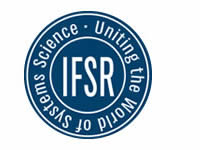IFSR Newsletter 1988 No. 2 (18) June-July
STEPHEN SOKOLOFF
In what ways can cybernetics contribute to the progress of the biological and medical sciences? The 29 lectures which were held at the symposium elucidated many exciting possibilities. About a fifth of these presentations involved models of the activities of single neurons (nerve cells) or nerve networks. The award for the best paper of the whole EMCSR meeting went to A. Buonocuore (University of Naples) for a study of this kind, entitled “On some Numerical and Algorithmic Problems in Single Neuron’s Activity Modelling”. Buonocuore is particuarly interested in the development of models which take account of oscillatory inputs or changes of the neuron’s threshold resulting from periodic internal or external pertubations.
One of the most exciting current topics is the modelling of neural networks. Cyberneticists hope to eventually construct computers that function like human brains. Information will be stored ‘within the network itself and the computer will, like an intelligent organism. learn from past encounters and trials.
Some experience-based learning systems already do exist. Francesco E. Lauria, the author of a symposium paper, tested the one he designed as a controlling device for an arm with three joints which can pursue a freeflying target. His results (presented elsewhere) seem quite encouraging.
Other speakers dealt with the nature of learning. In the symposium “Humanity. Architecture and Conceptualisation” Turk maintained that languages are often acquired by using evolutionary instead of rule-based (grammatical) methods. The new speaker learns by trial and error, continually molding his usage to more closely fit the patterns set by current practitioners This approach could be applied to machine as well as to human learners
ECOLOGY
Some of the lectures. such as that of Alex M. Andrew. related to more global problems. The author described his model system in which Lovelock’s hypothesis – that the totality of living things in the biosphere acts like one large animal to regulate environmental variables – is realized. Organisms are known to exert a considerable influence upon their surroundings. Free oxygen, for example, was first released into the Earth’s atmosphere by photosynthetic microbes. In Andrew’s system the spread of different colored flowers serves to regulate the temperature of the environment. The black daisys absorb heat, whereas the white ones reflect it; the bare ground has a degree of reflectance intermediate between those of both kinds of plants. In this model, the daisys modify the temperature of their environment, shifting it towards a value which is optimal for their growth.
OTHER STUDIES
M. Ruda is attempting to work out a strategy for plant fertilization that minimizes the extent of ecological damage. Jiang Jianming presented a new, non-invasive method for measuring the fetal heart rate. The problem she had to overcome is that the heart sounds from the fetus are much weaker than the background “noise” (maternal heartbeat, etc.). The interference must therefore be computationally subtracted. Baaske and Hussain are concerned with incorporating a consideration of behavioral and social factors into health care strategies. It is generally know that certain psychological conditions such as mental stress and bereavement – and not only biological causes – are associated with higher frequencies of illnesses
Of course I realize that my discussion of the symposium papers is incomplete. I hope, nevertheless, that this brief survey will suffice to illustrate the point, that cybernetic methods are currently being used to study a considerable array of problems in biology and medicine. A good crosssection of the work of this kind which is now going on was presented at the EMCSR ’88
